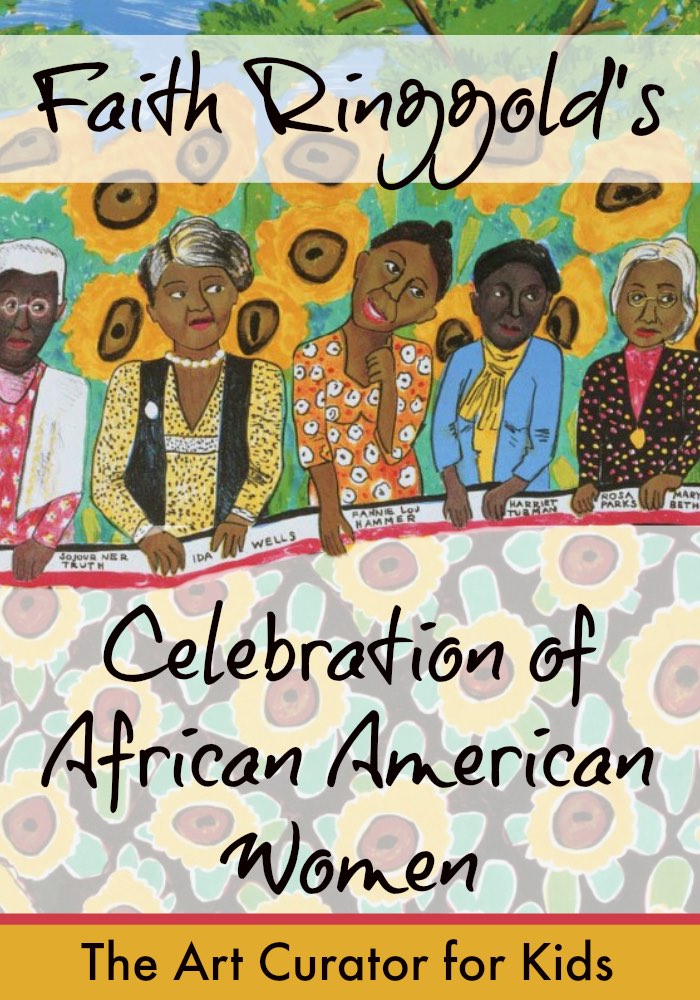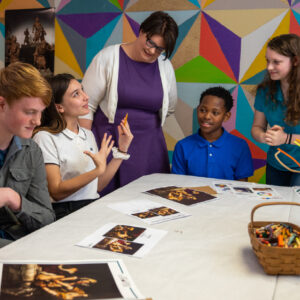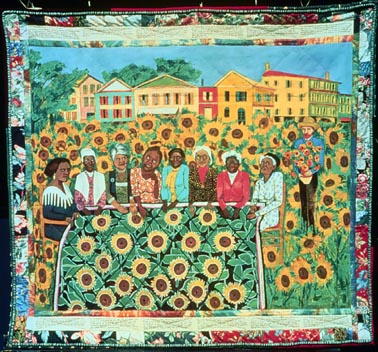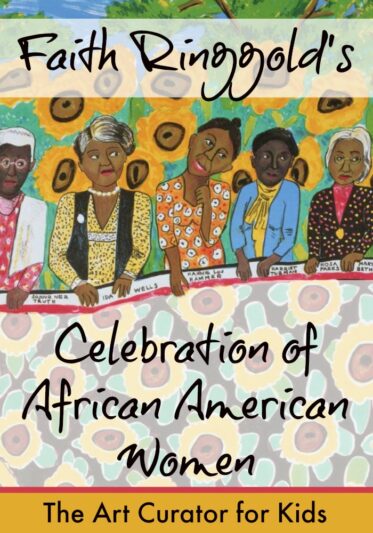This past weekend, I had the great honor to present at The Art of Education’s Winter Conference. One of the featured presenters for the day was artist Faith Ringgold. I couldn’t believe I got to present immediately before her! Isn’t that amazing?
When I told my friends about it, many of them had not heard of Faith Ringgold. After being inspired by her passion and words on Saturday, I’m happy to introduce you to Faith Ringgold.
Faith Ringgold’s Celebration of African American Women

Please note, this post includes Amazon affiliate links. As an Amazon Associate I earn from qualifying purchases.

Get the Full Lesson!
This Lesson is in The Curated Connections Library!
Find the full lesson from this post along with hundreds of other art teaching resources and trainings in the Curated Connections Library. Click here for more information about how to join or enter your email below for a free SPARKworks lesson from the membership!
Ringgold started out as a painter and focused much of her art on telling the stories of the Civil Rights Movement and her experiences growing up in Harlem. On a trip to Europe in 1972, Ringgold experiences some Nepali artworks that used fabrics around the border. This inspired her to start making quilt paintings, and those are the artworks where she has really made her mark.

Visit this link to see a better image!
Through her quilt paintings, Ringgold tells important stories and makes political statements. Her artwork is especially focused on African American women. In this artwork, The Sunflower Quilting Bee at Arles, Ringgold takes Van Gogh’s famous sunflowers (and Van Gogh himself) and introduces them to a team of women, working together to make a quilt.
These women are influential leaders and important figures in American history including (from upper left) Madam Walker, Sojourner Truth, Ida Wells, Fannie Lou Hammer, Harriet Tubman, Rosa Parks, Mary McLeod Bethune, and Ella Baker. The ninth woman is a fictional character invented by Ringed named Willa Marie Simone.
The text on the painting says: “an international symbol of our dedication to change the world”. This would be a great starting point for discussion of this artwork with your students.
If you’d like to use this artwork in your classroom or home, here are some activities, discussion questions, and resources.
Art Discussion Questions
1. What could this quilt symbolize or represent?
2. Why did the artist invent Willa Marie Simone? Why did she put her among these “superwomen”? How does the artist make Willa Marie different?
3. Why do you think the artist chose to include Van Gogh?
4. What could the sunflowers represent?
Creative Thinking Activity
Have students imagine what it would be like to be the fictional Willa Marie Simone. Have students imagine what she might be thinking and write a letter from her point of view about her experience spending time with these amazing women. I have a letter printable in my worksheet bundle, and some of the other character analysis worksheets from the bundle would work really well with this artwork.
Related Book – Dinner at Aunt Connie’s House
A great book to accompany this artwork is Dinner at Aunt Connie’s House, also by Faith Ringgold. In this book, a young girl visits her painter aunt’s house for dinner and to see her artworks. The aunt’s artworks are of portraits of influential African American women. Each painting comes to life and tells the young girl about her life.
The book is a little long, but it is a great introduction to some important women. I would say that while this is a great book, it’s not great for a read-aloud because it has a little too much information. It would be great as part of your home or classroom library as a reference, and the artworks inside are gorgeous!
Portrait Project
This painting and the related book would be a great project to assign your students. Have each student choose a person to feature, paint their portrait, and then write a little bit about their lives from their voice as the book does.
Other Children’s Books by Faith Ringgold
Ringgold wrote many children’s books perfect for a unit on the Civil Rights Movement or Black History Month.







